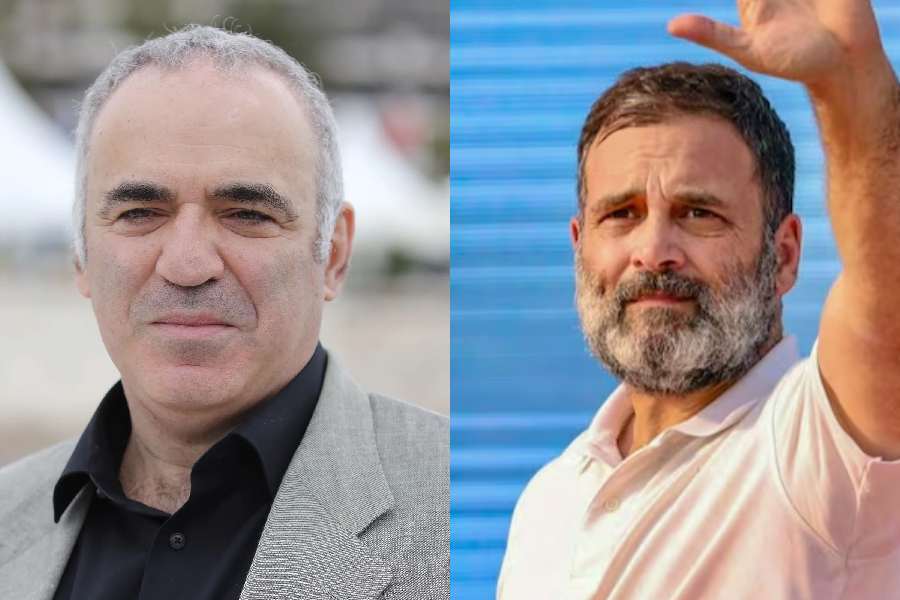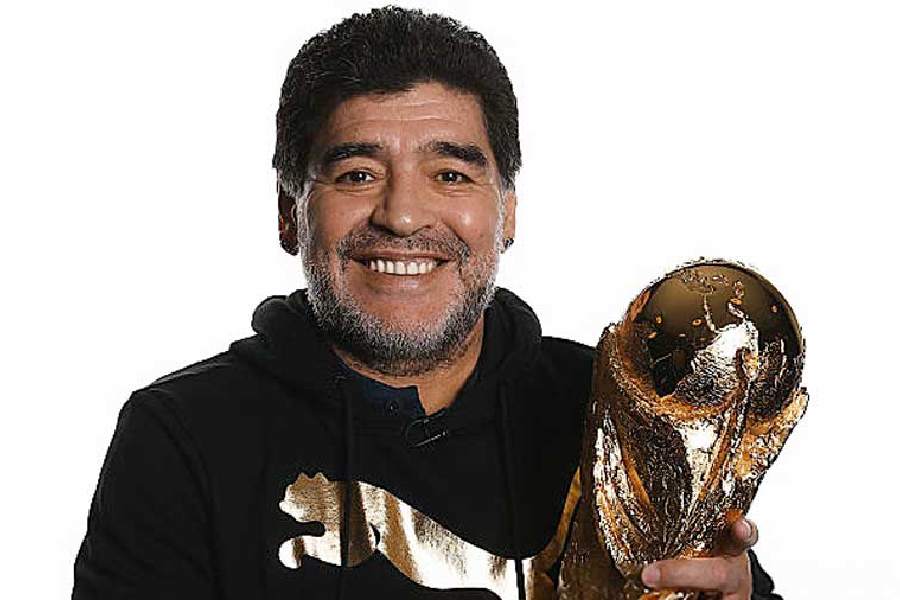The Christopher Nolan biopic Oppenheimer has stirred memories of people who had occasion to meet and work with the “father of the atomic bomb”. Jacob Kuriyan is one such person. A former scientist and currently a healthcare researcher in New Mexico, the site for Oppenheimer’s Los Alamos lab, Kuriyan was recruited by the man himself to work in his institute at Princeton, the Institute for Advanced Study (IAS), in 1966. But Kuriyan would rather remember Julius Robert Oppenheimer (1904-1967) as the “father of quantum physics in the US” rather than the “father of the atomic bomb”.
A PhD from Syracuse University, Kuriyan obtained a Master’s degree from Madras University. He joined Oppenheimer when he was just 25. “In fact, I was one of the last two appointments made by Oppenheimer to the physics group,” said Kuriyan.
Oppenheimer, then 62, was afflicted with throat cancer and was undergoing treatment. “He was a chain smoker and his cancer was probably because of that. There were people at Los Alamos who developed cancer because of the radioactive material they were handling. Oppenheimer got his cancer 10-15 years after the Manhattan Project.”
IAS in Princeton, which is separate from Princeton University, is a research institute, at that time headed by Oppenheimer. It was home to Albert Einstein and John Von Neumann, the father of modern computers. Kuriyan was a junior member there.
“It was one of those places where nothing was expected of you. I was continuing my research in the branch of particle physics and had published a paper before my PhD, which was rare and that was probably why I was selected to be in the institute,” said Kuriyan over an hour-long trans-Atlantic call.
Kuriyan was assigned an office right below Oppenheimer’s office. “I did not have many interactions with him. At that time he was travelling to New York for his cancer treatment. He used to go by train. I used to see him around and one day made an appointment to meet him. He very graciously made time for me. As I knocked on the door to his private office, he opened the door, welcomed me, and walked me to the chair and pulled it out, so that I could get seated — and then went to the other side of the table and sat in his chair. I still remember that. How gracious! Many others have appreciated that about him. We spent a good hour talking about physics.”
Talking about Oppenheimer and the times then, Kuriyan said: “There was a huge number of people on staff who had dealt with Professor Oppenheimer — and so I was steeped in that environment. There was a lot of concern at that time about the atomic bomb and what it would do in the western world. People were saying Russia had the bomb, and when would China have it. They never talked of India having it, though. The excitement at that time centred on Group Theory and SU(3) (mathematical concepts involving symmetries and used to describe interactions between subatomic particles), topics that another famous American physicist, Murray Gell-Mann, made famous. Murray joined the institute the following year and I had many discussions with him.”
After Einstein, Oppenheimer was the most important figure in physics at that time. “True, he didn’t win the Nobel. But I have no doubt in my mind that he would have won it had he not been in the Manhattan Project. He had done very important work in quantum physics including the correct identification of the ‘anti electron’ in the Dirac equation, as well as speculation on the black hole, and he could have easily qualified for Physics Nobel,” said Kuriyan.
About Christopher Nolan’s eponymous film, Kuriyan said: “I haven’t watched it yet. I plan to do so. But there seems to be many misstatements including the one that he spoke five different languages, one of which was Sanskrit. But Sanskrit is a dead language. Oppenheimer had learned Sanskrit and had read the Hindu scriptures, especially the Gita.”
“I heard that Indians were offended by the scene in the movie of Oppie reading the Bhagavad Gita while he was in bed with his mistress. That is Hollywood at its gratuitous worst. We should not be distracted and instead focus on understanding what made him ‘tick’,” Kuriyan said.
Oppenheimer’s role as an academic and the builder of the American school of quantum physics is not being discussed. “It is his role as the father of the atomic bomb that is being stressed a lot. But, even more important, he was the father of quantum physics in America, at a time when American physics was at a low point. Between 1905 and 1930, other than Subrahmanyan Chandrasekhar (the distinguished Indian Nobel physicist) who had migrated from the UK, I can’t think of anyone comparable in the US. It was Oppenheimer who learnt quantum physics in Europe and started to train students in the United States that played a critical role in building the rich physics community in the US that made it possible for the Manhattan Project to succeed,” pointed out Kurian.
Oppenheimer, born to Jewish parents, graduated from Harvard in three years with a summa cum laude (signifying a degree that was earned with the highest distinction). He then travelled to Europe and completed his PhD in two years. “He was a smart person, quick to decipher complex issues. He completed his PhD in Germany and came back to teach at Berkeley (University of California) and CalTech in Southern California. He was chosen by Lt General Leslie Groves of the United States Army Corps of Engineers to direct the Manhattan Project because he was so good at explaining things. Oppenheimer was able to attract the brightest of minds and manage them at Los Alamos. We should remember that, at that time, the outstanding physicists were in Europe. The splitting of uranium was accomplished in Germany. Werner Heisenberg, who developed quantum mechanics, was in Germany, and suspected to head the bomb construction project for the Nazis. Compared to them, the US had young inexperienced scientists. It was like building a championship team from raw recruits. That’sOppenheimer’s accomplishment at Los Alamos,” he said.
Most physicists were uniformly on Oppenheimer’s side during and after the security clearance hearings. In hindsight, it is easy to understand Oppenheimer’s hesitancy to rush and create “super” — a hydrogen bomb. After all, his work had contributed to the deaths of over 200,000 people.
“At the same, we can understand the disappointment in Edward Teller, a member of his Los Alamos project, who was promoting the ‘super’. Oppenheimer became a ‘barrier’ to the development of the ‘super’. Is it any wonder that Edward Teller, aided, I am certain, by the yet-to-be-named ‘military industrial complex’, colluded to keep Oppenheimer out,” felt Kuriyan.
“Teller did whatever to try and minimise Oppenheimer’s influence. Sadly, it went too far — suggesting he was not a patriotic American and possibly a Soviet spy. Of course, it was all nonsense. They punished him by denying him security clearance — access to ‘Top Secret’ documents. I feel his vilification and revoking of security clearance was a result of the red-baiting politicians and the military-industrial complex nexus, with vested interests in military investments,” said Kuriyan.
But didn’t Oppenheimer start it all by helping build the atom bomb? Kuriyan was quick to defend him.
“When approached to build the atomic bomb, he did it out of a conviction that it would end the World War, which it did. The prevailing thought was Japan was ‘defeated’ but to make them surrender, a land invasion would be necessary and could have resulted in the deaths of hundreds of thousands of Americans. One proposal was to have a ‘demonstration’ of the devastation the bomb could bring but, in hindsight, even after a hundred thousand deaths, the Emperor refused to surrender — and a second bomb was necessary to make them surrender. There were no good choices and we see it even today,” said Kuriyan.
Oppenheimer was a popular physicist, and without doubt he enjoyed the adulation, said Kuriyan. Famous physicists frequently chose to visit and spend a year at his institute. “At seminars he would summarise conclusions succinctly and his praise would advance their careers.”
While a debate is raging over Oppenheimer quoting the Gita after the Trinity explosion, Kuriyan said: “It is significant to me that Oppenheimer would choose to quote from the Gita rather than Greek or Roman texts.”
“It is the implications of his embrace of the universalism of Hindu philosophy — the reason why he learned Sanskrit. I am not saying he was an expert or anything like that. It is wonderful that someone in charge of such a destructive weapon development was cultured and sensitive — aware of humanity. I am not also suggesting that India can take credit for Oppenheimer’s humane approach to this most evil of topics. But Hinduism did contribute. That is the kind of a leader we needed when we entered the new world of the atom. Contrast that with what we have now as ‘thought leaders’, as we tackle the threat of artificial intelligence and how it might destroy societies,” Kuriyan concluded.










